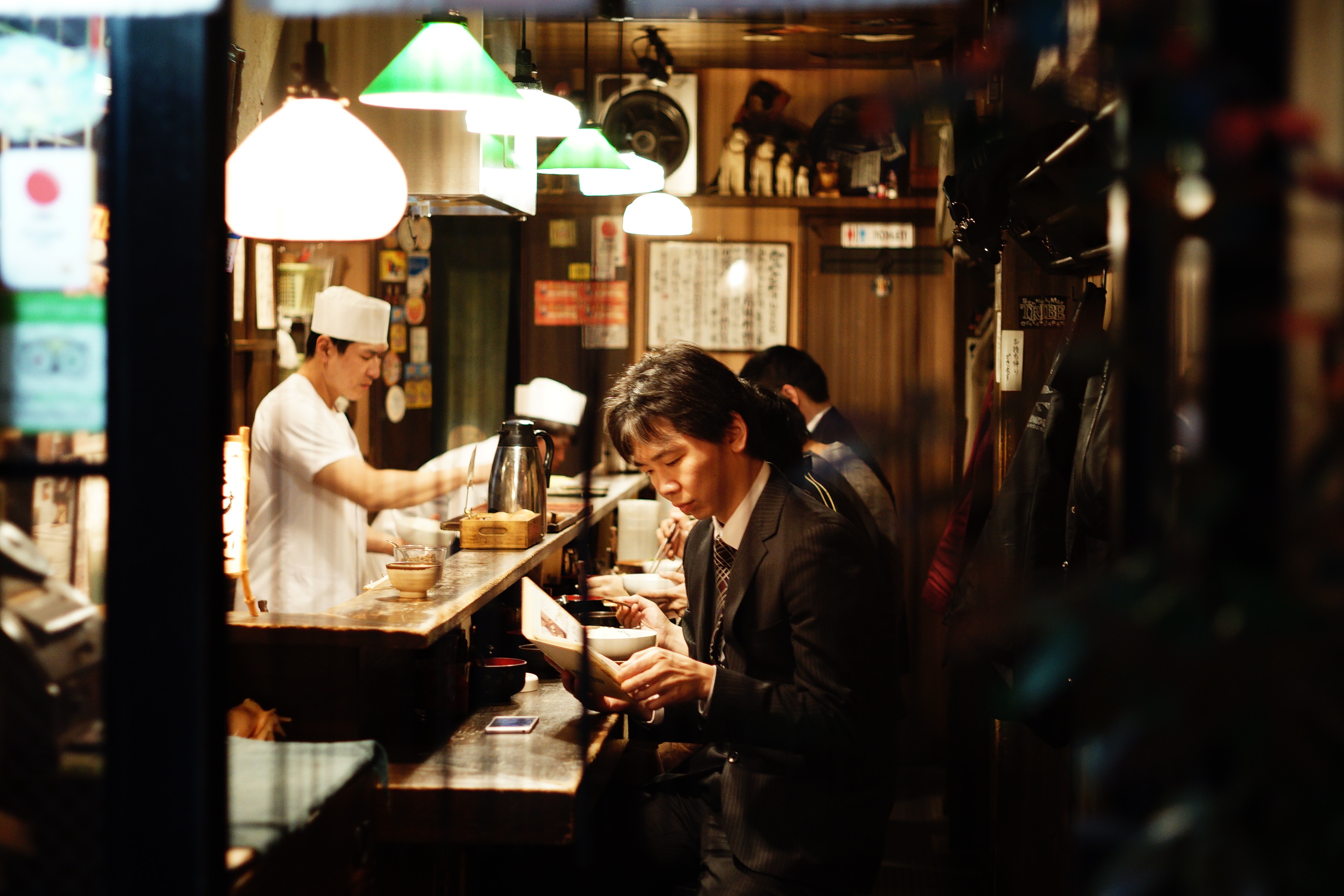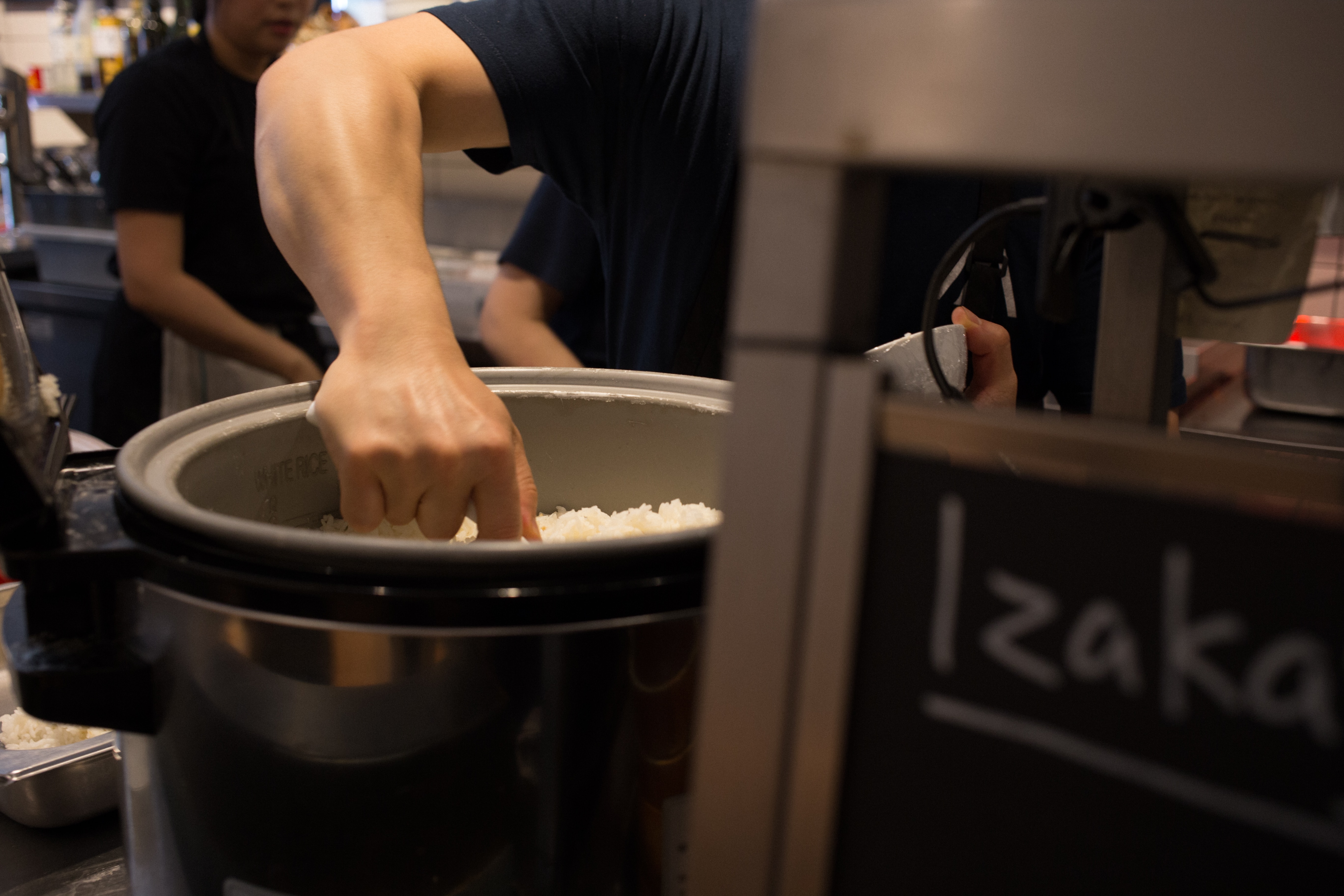Our “Dinner In…” series takes you around the world for dinner. This week, we visit a country known for its culinary customs and etiquette.
In Japan, there's a strict dividing line between the formal and the informal. If you'd like to be properly equipped for the dinner table, here's what you need to know.
Japanese Dining Culture
Unless you're getting fast food at a market or food hall, Japanese dinner won't be "grab-and-go" like it often is in the US. You should be prepared for a more formal experience, especially if you're traveling to Japan for work and eating with colleagues.
In most restaurants, staff will speak a form of polite Japanese called Keigo. It comprises very long words, often spoken at a fast pace. If you're not accustomed to it, it might be difficult to understand. The good news is most of the statements are rhetorical questions that don't require answers.
In the US, a server might come to your table and say, "Hi, my name is Dave and I'll be taking care of you today." Dave might comment on the hat you're wearing, recommend his favorite dishes, or even sit down at your table for a minute to take your order. Dining in Japan is quite different; the server will come off as professional rather than friendly.
A Word on Seating
Western culture has had some influence on Japanese dining. In many restaurants, you'll find the same tables and chairs that you'd see in New York or San Francisco.
Traditionally though, with Japanese cuisine in older restaurants, meals are taken sitting on a tatami mat. Seating arrangements are steeped in meaning. Do not wear shoes to the dinner table, and try not to wear socks with holes in them.
Sitting in the seiza position (on heels with legs tucked underneath) is the most respectful. At the behest of your host, you may "get comfortable" if he or she says to. In that case, sit cross-legged if you are male, and with your legs tucked to the side if you are female. Splaying your legs out in front of you is considered rude.
The middle of the table is the most honored position, so that's where the host would sit. An honored guest should expect to be placed furthest from the door.

Understanding Dinner in Japan
When you enter a restaurant in Japan, you'll hear "Irasshaimase," which means "Welcome, come in." You'll be asked how many people are in your party, and then led to your table. It's rare that you would seat yourself.
Once seated, you can expect to be served water or tea. You'll also receive a wet towel (oshibori) for cleaning your hands. Chopsticks will either be at your side, or in a box on the table.
Your menu will probably have more illustrations than you'd see in a Western restaurant. In other cases, you'll find menus written on the wall. If you don't know what to order, you can ask for recommendations (osusume) or for the chef's choice (omakase). At izakaya restaurants, it's common for everyone in the party to share an array of dishes. At other establishments, you'd just order on your own.
Once you're ready to order, you might find a call button on your table. Simply press it to get the waiter's attention. Or you can say sumimasen, which means "excuse me," to politely call someone over.
The Faux Pas to Avoid
As storied, rich, and lovely as Japanese eating culture can be, it can also be complicated. That means there's plenty of room for misstepping. Here are some faux pas that should be easily avoidable:
- Raising food above your mouth - Don't bring your food to eye-level to look at it, just eat it!
- Lingering over omakase - As soon as the chef puts the dish in front of you, it's go time. Don't continue idle chat without paying proper respect to the service.
- Resting chopsticks on your bowl - Look for the nearest chopstick rest, or else use the side of your tray.
- Overserving your soy sauce - While it's normal to leave traces of soy sauce behind, you don't want to overdo it. Pour yourself only as much as you think you'll use.
- Pouring soy sauce on your rice - Speaking of soy sauce, don't pour soy sauce directly on your rice. That causes it to unstick. Instead, dip clumps of rice directly into your individual soy sauce.
- Eating sushi in multiple bites - Try for one bite then down the hatch, two if you absolutely must.
- Drinking before the first kanpai - Wait until everyone has a drink before you say "cheers" (kanpai) and take a sip.
- Wiping your face or the table with the oshibori - It's just for hands and fingers!
- Getting weird with chopsticks - Don't drum on the table or fiddle with your chopsticks. Don't rub or scrape them together, as it implies you think they're of cheap quality. And certainly don't stick them straight up in your rice bowl - that's a gesture tied to traditional Bhuddist funeral rituals!
- Asking for a doggie bag - Taking home food in a take-out container is almost never done in Japan. Not wasting food is a large part of food etiquette, so make sure only to order what you can eat.
On the other hand, slurping noodles is totally acceptable, and is even seen as a sign of appreciation. You can drink the broth directly from the bowl too, once all of the noodles have been eaten.

Essential Vocabulary for Japanese Dinner
Questions and Commands
- Kore wa nan desu ka? - What is this?
- Kore wa niku desu ka? - Is this meat?
- Kore wa su-pu desu ka? - Is this soup?
- Kore ni X ga haitte imasu ka? - Is there X in this?
- X ni arerugi- ga arimasu - I am allergic to X
- Onomimono wa nani ni shimasu ka - What do you want to drink?
- Gochuumon wa okimari desu ka - What do you want to order?
- Kurejitto ka-do wa tsukaemasu ka? - Can I use a credit card?
- Kaikei wa betsubetsu de onegai shimasu - Please separate the bills
Drinks
- Nomimono - Drinks or beverages
- Mizu - Water
- Gyūnyū - Milk
- Jūsu - Juice
- Ocha - Green tea
- Kōhī - Coffee
- Osake/Sake - Japanese rice wine
- Kōra - Soda
- Ramune - Popular Japanese soft drink, the bottle is sealed with a marble
- Bīru - Beer
- Wain - Wine
Food
- Tabemono - Food
- Gohan - Plain white rice
- Onigiri - Rice ball
- Sakana - Fish
- Ebi - Shrimp
- Pan - Bread
- Kēki - Cake
- Niku - Meat
- Chīzu - Cheese
- Tamago - Egg
- Shio - Salt
- Kudamono - Fruit
- Yasai - Vegetables
- Sarada - Salad
Enjoy dinner, and don't forget to keep your chopsticks in check!

 Spanish
Spanish
 French
French
 Italian
Italian
 Arabic
Arabic
 Portuguese
Portuguese
 German
German
 Chinese
Chinese
 Japanese
Japanese
 Russian
Russian